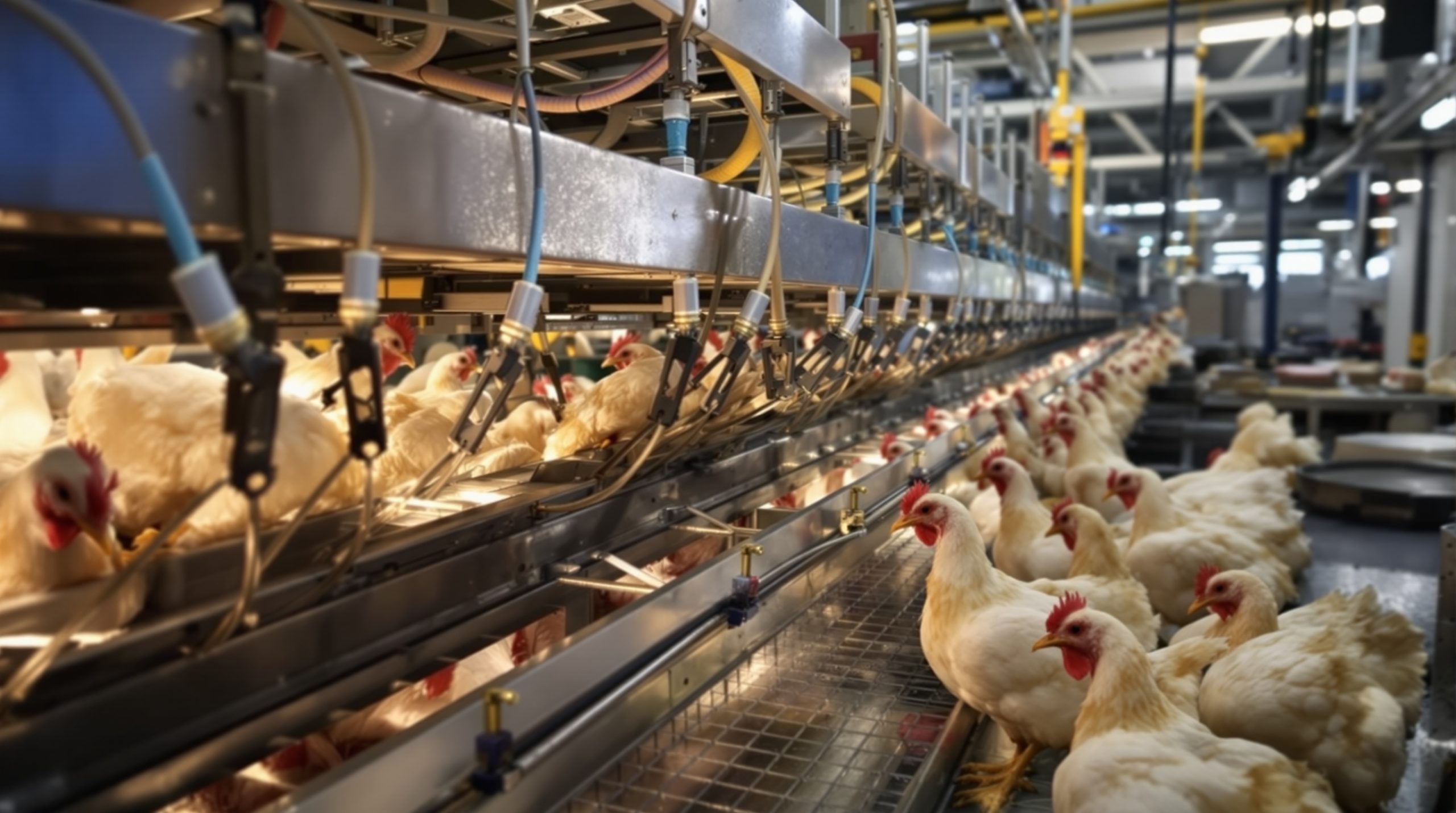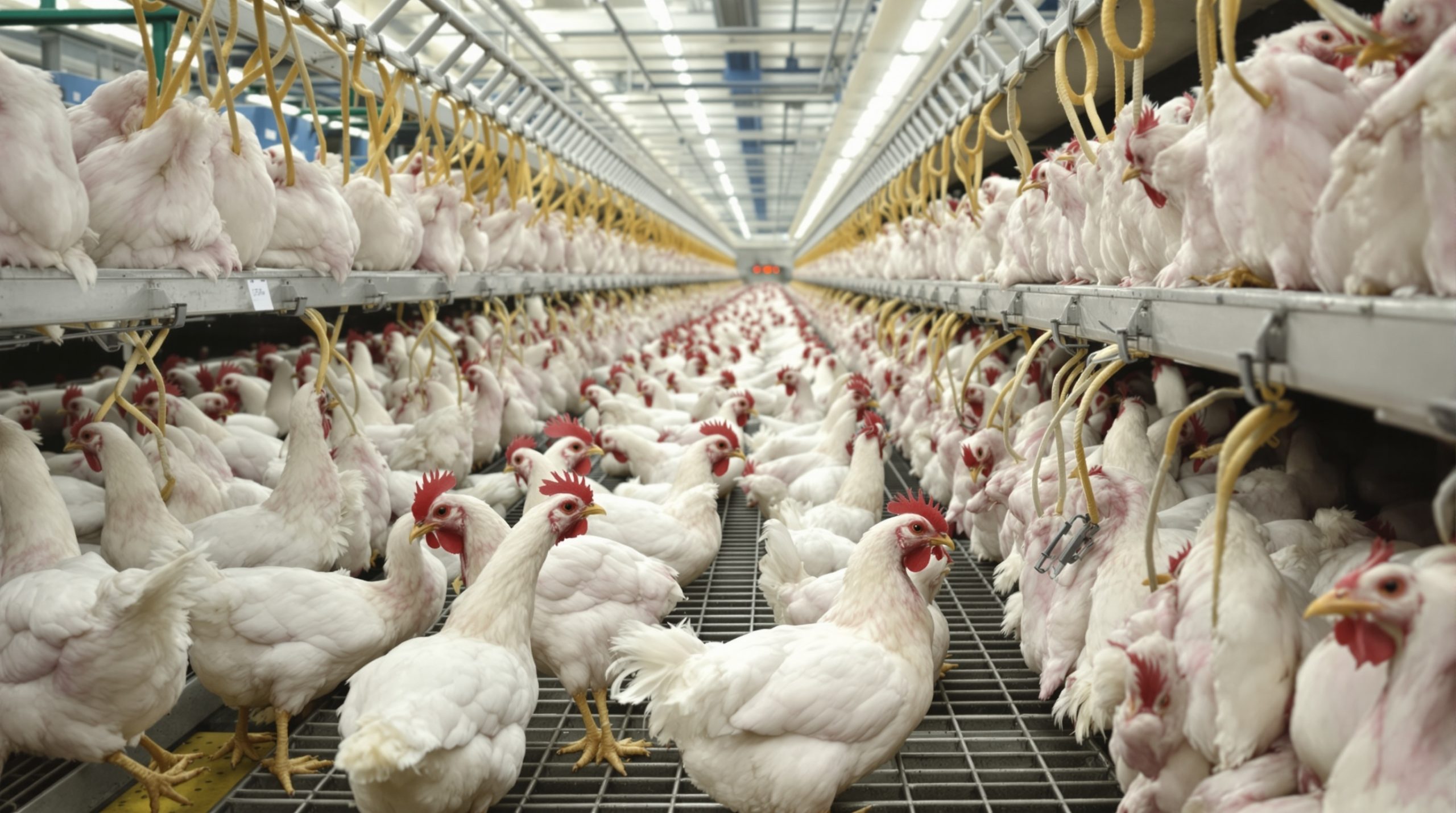The poultry industry stands at a critical crossroads as global trade policies and labor market dynamics undergo dramatic shifts. Tariff implementations and persistent labor shortages have emerged as twin catalysts accelerating the adoption of automation technologies across poultry processing facilities worldwide. This transformation isn’t merely a reaction to temporary challenges—it represents a fundamental reshaping of how poultry processors approach operations, efficiency, and long-term strategic planning. As companies navigate these complex waters, understanding the interplay between economic policies, workforce trends, and technological innovation has become essential for maintaining competitiveness in an increasingly demanding market.
The Evolving Landscape of Poultry Processing Automation
The poultry processing industry has traditionally relied on significant human labor, particularly in tasks requiring dexterity and judgment. However, according to recent latest industry insights, automation adoption has accelerated dramatically over the past decade, with the global food automation market projected to reach $29.4 billion by 2027. This growth trajectory has been significantly influenced by both trade policies and labor market conditions.
Automation in poultry processing encompasses a wide spectrum of technologies, from basic mechanical systems to sophisticated robotics incorporating artificial intelligence and machine vision. These systems can now handle increasingly complex tasks that were once the exclusive domain of human workers:
- Deboning and portioning with precision robotics
- High-speed sorting and grading using computer vision
- Packaging automation with flexible equipment
- Quality inspection through AI-powered systems
- Logistics and material handling with autonomous vehicles
The Impact of Tariffs on Automation Decisions
Tariffs have emerged as a significant driver of automation investment decisions in the poultry industry. When countries impose import tariffs on poultry products, processors face immediate challenges to profitability and market access.
How Tariffs Drive Automation Investment
When tariffs increase the cost of exported products, processors must find ways to offset these costs to remain competitive in international markets. Automation offers a compelling solution by:
- Reducing overall production costs to counter tariff-related price increases
- Improving processing efficiency to maintain margins despite trade barriers
- Enhancing product consistency to justify premium pricing in restricted markets
The implementation of tariffs between major trading partners has created a ripple effect throughout global supply chains. For instance, when Country A imposes tariffs on poultry imports from Country B, processors in Country B must either absorb the additional costs or find ways to reduce production expenses. This economic pressure often accelerates automation investments that might otherwise have been implemented more gradually.
Case Study: Tariff Effects on Cross-Border Processing
When significant tariffs were imposed between the U.S. and China in 2018-2019, many American poultry processors accelerated their automation timelines. One major processor reported investing $84 million in automation technologies specifically to offset tariff-related market pressures, achieving a 22% reduction in production costs within 18 months.
Labor Availability Challenges in Poultry Processing
Perhaps even more pressing than tariff concerns, labor shortages have become a chronic challenge for poultry processors globally. The industry has historically relied on a labor force willing to perform physically demanding tasks in challenging environments. However, several factors have contributed to persistent staffing difficulties:
- Demographic shifts reducing the available workforce
- Increasing competition for workers from other sectors
- Rising wage expectations across the labor market
- Immigration policy changes affecting worker availability
- Post-pandemic reassessment of work preferences
Labor shortages have reached critical levels in many processing facilities, with vacancy rates in some regions exceeding 15%. This workforce gap creates immediate operational challenges while raising long-term questions about the sustainability of labor-intensive processing methods.
The Economics of Labor vs. Automation
The financial calculus of automation has shifted dramatically as labor costs rise and technology prices decline. Modern poultry processing equipment often demonstrates return on investment (ROI) in 2-3 years, compared to 5-7 years a decade ago. Companies can evaluate these financial implications using a free ROI & Carcass Balance Calculator to determine the specific economic benefits for their operations.
Beyond direct labor cost savings, automation delivers additional financial benefits:
- Reduced training costs amid high employee turnover
- Lower workers’ compensation expenses
- Decreased recruitment and hiring expenditures
- Improved yield and reduced product waste
- Enhanced production planning and scheduling capabilities
Technological Innovations Responding to Market Pressures
The twin pressures of tariffs and labor shortages have accelerated technological innovation in poultry processing equipment. Manufacturers have responded with increasingly sophisticated solutions designed specifically to address these challenges.
Advancements in Robotic Processing
Robotic systems have made remarkable progress in handling the variable nature of poultry products. Modern robotic applications include:
- Anatomically-aware deboning systems that adjust to bird size variations
- Multi-function robotic cells capable of performing sequential operations
- Collaborative robots designed to work alongside human operators
- Self-learning systems that improve accuracy through operational data
These systems are increasingly capable of matching or exceeding human performance in many processing tasks while offering consistent operation regardless of labor market conditions.
Data Integration and Predictive Analytics
Beyond physical automation, data systems now provide unprecedented visibility into processing operations. These systems help processors:
- Optimize production flows to maximize equipment utilization
- Predict maintenance needs before equipment failure occurs
- Analyze yield data to identify improvement opportunities
- Adjust processes in real-time based on incoming product characteristics
Global Variations in Automation Adoption
The impact of tariffs and labor availability varies significantly across global markets, creating distinct regional patterns in automation adoption.
Regional Differences in Automation Strategy
North American processors have typically focused on high-volume automation solutions that reduce labor dependencies at scale. European processors often emphasize flexibility and rapid changeover capabilities to handle diverse product specifications. Asian markets have seen rapid technology adoption as labor costs rise and technical capabilities improve.
These regional variations are directly influenced by local labor market conditions, trade policies, and consumer preferences. In regions where labor remains relatively affordable and abundant, automation investments tend to focus on the most labor-intensive processes. In contrast, regions with acute labor shortages often implement more comprehensive automation solutions.
Implementation Challenges and Considerations
While automation offers compelling benefits in response to tariffs and labor challenges, implementation is not without obstacles. Processors must navigate several key considerations:
Capital Investment Requirements
The initial capital expense of advanced automation systems remains significant, requiring careful financial planning and often phased implementation approaches. Many processors develop multi-year automation roadmaps that prioritize high-impact areas while managing capital expenditures.
Workforce Transition Strategies
Successful automation implementation requires thoughtful workforce transition planning. Rather than simply eliminating positions, leading processors often:
- Retrain existing workers for equipment operation and maintenance roles
- Develop new technical career paths within the organization
- Use natural attrition to reduce workforce size gradually
- Create specialized positions focused on optimizing automated systems
Technical Integration Challenges
Integrating new automated systems with existing equipment and workflows presents technical challenges. Processors must consider:
- Compatibility with existing infrastructure and utilities
- Data communication between different equipment systems
- Production flow adjustments to accommodate new processing methods
- Maintenance requirements and parts availability
Future Outlook and Strategic Considerations
The convergence of tariff pressures and labor challenges will continue to shape poultry processing automation in the coming years. Industry analysts project several key developments:
- Increasing adoption of fully-autonomous processing lines
- Greater emphasis on flexibility to address market volatility
- Enhanced focus on sustainability metrics alongside efficiency measures
- Emergence of automation-as-a-service business models
For processors developing automation strategies, several factors deserve particular consideration:
- The likely trajectory of labor availability in their specific regions
- Potential trade policy changes affecting their key markets
- Consumer preferences regarding processing methods and product attributes
- Competitive positioning and differentiation opportunities
Conclusion
The dual forces of tariff implementation and labor scarcity have fundamentally altered the automation landscape in poultry processing. These challenges have transformed from temporary obstacles into persistent structural factors that demand strategic responses. Forward-thinking processors are now treating automation not merely as a cost-cutting measure but as a comprehensive strategic approach to ensure long-term viability and competitiveness.
As the industry continues to navigate these complex waters, the most successful organizations will be those that develop thoughtful, integrated approaches to automation that address both immediate pressures and long-term objectives. For processors seeking guidance on developing automation strategies tailored to their specific circumstances, contact our team of industry experts for personalized consultation and solutions.
References
[1] National Chicken Council – Labor Shortage Impact Report – https://www.nationalchickencouncil.org/industry-issues/labor-shortage-impact-report
[2] International Trade Administration – Poultry and Processed Foods Tariff Data – https://www.trade.gov/market-intelligence/poultry-and-processed-foods
[3] Poultry Processing Technology Research Center – Automation Adoption Trends 2022 – https://www.auri.org/research/food/poultry-processing/
[4] Journal of Food Engineering – Robotics in Poultry Processing: Technological Advances – https://www.sciencedirect.com/journal/journal-of-food-engineering
[5] U.S. Bureau of Labor Statistics – Food Manufacturing Employment Data – https://www.bls.gov/iag/tgs/iag311.htm
[6] Food Processing Technology – Global Market Analysis Report 2023 –



